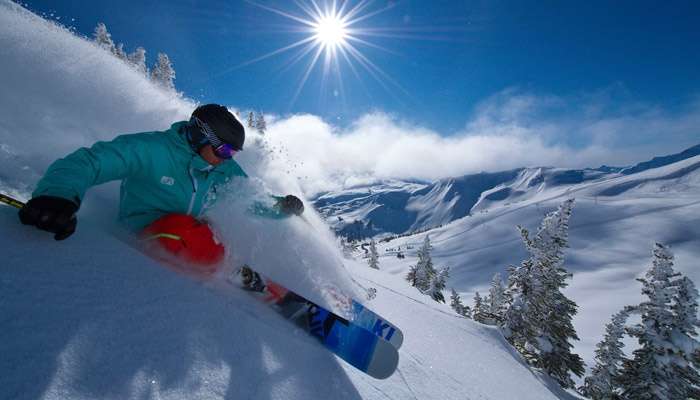If you’re like a lot of us, you spend a large portion of the fall, winter and spring months on your phone’s weather app and checking the snow reports waiting for a killer powder day or trying to decide when to take your yearly ski vacation.
While checking your snow totals is a crucial component of choosing the right day to hit the slopes, you also want to make sure that your body is as ready as the mountain and that you know what to do post ski day to help your muscles recover properly. The fact of the matter is that no exercise compares to or uses the same muscles in the same way as skiing.
So whether you’re an avid skier or a novice, understanding what to do to help your muscles recover from skiing will help ensure you have a great time on the mountain. Let’s take a look at some of the most important parts of recovery for skiers.
Hit the gym
Overcoming muscle fatigue starts before you even step on the mountain. Strengthening the muscles you’ll use when skiing will not only help minimize your soreness, it will also decrease the chances of injury and help you perform better on those tough runs. See if you can find a ski conditioning class or personal trainer who can help you get in ski shape. Proper conditioning should include aerobic exercise to increase your stamina as well as strength training for your legs, core, back and pelvis to increase balance and stability.
Use the proper gear
Make sure your boots and skis are in top condition before you hit the slopes for the first time each season. Have a pro check your binding settings so you don’t blow out a knee because your bindings don’t open on a hard fall.
Also wear the proper clothing for the conditions so you are warm but don’t overheat. If you are too sweaty at the end of the day your muscles are susceptible to injury as the temperature begins to drop quickly as the sun lowers late in the day.
Warm up before hitting those black diamonds
Cold muscles are tighter and more likely to be injured so before you hit the mountain, do a set of jumping jacks or run in place. We also recommend taking some easier green and blue runs before jumping into the more difficult black diamonds or moguls.
Also you can use, QiVantage’s Recovery Cream or Muscle and Joint Energizer to warm the body up prior to hitting the slopes. Rub or spray on muscles and area of your body that you want to warm up and keep limber. These unique formulas help increase circulation to the areas applied…it’s like a warm in a tube or bottle.
Stretch and massage
Take the time directly after you get off the mountain to stretch and massage your muscles. You want to make sure to do this while they are still warm as you need to get rid of the byproducts created during your exercise and help encourage new blood flow and healing before your muscles get too cold. Make sure you spend time stretching out all the muscles in your legs and hips as well as your back; those are the muscles that take the brunt of the stress when you’re on the slopes.
If you really want to treat yourself, hit the spa at the lodge for a much-deserved massages. The masseuses at the mountain know exactly what muscles need to be worked out. If you’re looking for a more cost-effective alternative to the spa, try foam rolling your quads, hamstrings, IT band, calves and anterior tibialis muscles.
Stay hydrated
Before you head out for dinner and drinks after a hard day of skiing, down a couple glasses of water. Chances are you’re slightly dehydrated after a full day and pounding beers to quench your thirst will only make you more dehydrated.
Take a rest day
Rest and recovery are crucial components of ensuring that your muscles stay clear of injury. If you don’t give yourself proper time to rest between ski sessions, you might exert your muscles too far and you won’t be able to ski for the rest of your trip or even a full ski season. So make sure to take a day to rest your overworked muscles. Maybe instead of hitting the slopes one day, take a day to get a massage and soak a bit in the hot tub to loosen up your muscles.
Skiing is an incredibly physically demanding sport and the strain on your muscles from a day on the mountain can lead to lots of pain and potential injury. Ensuring that you’re muscles are well prepared for the exertion and that you allow them to properly recover following your session will minimize the changes of pain and injury and will keep you in shape to keep skiing the whole season.
Want some additional tips and tricks to help your muscles properly recover after a tough day on the slopes? Check out our FREE Day-to-Day Muscle Recovery Checklist.



Leave A Comment